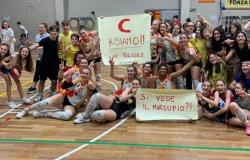
Last Sunday, in Pescara, a 17-year-old boy, Thomas Christopher Luciani, was killed over an alleged small drug debt. Two peers, both high school students and from good families, were arrested for the murder. According to what was reconstructed by the Flying Squad, the suspects would have stabbed the victim with 24 stab wounds and then, after abandoning the body in a park, they would have gone to the seaside. On the same day, in Florence, a 65-year-old social and health worker, Maria Teresa Chavez Flores, was strangled at home. Her nephew, 17, confessed to the crime at the end of a long interrogation. The two terrible news events have reopened the debate on youth violence and called into question the role of parents in the education of their children. “Violence is a transversal phenomenon, it does not only occur in disadvantaged social or economic contexts”, explains to IlGiornale the criminologist and psychotherapist Virginia Ciaravolo, an expert in violence against women and minors, with particular attention to adolescent problems.
Dr. Ciaravolo, in your opinion, are we faced with an explosion of youth violence?
“We must point out that violence is not a phenomenon of our times, but has always existed. Only that, while previously the news relating to these tragic events in the news went almost unnoticed, with the advent of social media they are amplified. That said, it is It is very important that experts in juvenile delinquency and youth crime pay further attention to the problem of the ‘gang’ which can commit from small thefts to real crimes, such as the one that occurred in Pescara”.
What is a pack?
“A pack is nothing more than a group made up of young adolescents who collectively act and encourage behaviors that deviate from socially shared norms. There is almost always a leader, a follower and then a bystander, i.e. the person who witnesses the violent actions of their companions The latter, although not actively participating in the action, is equally a moral accomplice in the possible criminal episode”.
Why do teenagers “pack”?
“Adolescence is a particular age, during which children seek their identity outside the family constellation. Therefore, to differentiate themselves from the family and affirm their identity, they look for someone who shares their same ideals or interests. Unfortunately, these are not always positive values and good principles.”
Are there any rules for joining a group? If yes, what are they?
“To become part of a social group, and especially a pack, one must conform to its logic. These memberships can lead young people to participate in socially deviant behaviors. Then other factors also intervene, such as the deprivation of responsibility “.
Meaning what?
“The group fuels violence and, at the same time, attenuates that sense of individual responsibility. Since there is a form of shared responsibility, the individual’s sense of guilt is reduced and, consequently, also the gravity of the illicit or even criminal action. Indeed , as we have also seen in recent news events, there is a sort of glorification of what has been committed.”
That is to say?
“Denigrating the victim, offending him, as happened in the murder of young Thomas, also gives us the idea of the disinhibition that young people feel when faced with death. As if it were a game and the victim was a videogame character.”
How do you explain violence in socially and economically stable family contexts?
“Violence is a transversal phenomenon, it does not only occur in disadvantaged social or economic contexts. What makes the difference is emotional well-being and emotional education within the family. During adolescence, children need to free themselves from their parents But if the adult has a careful eye, if he watches over and accompanies the child in his growth path, he can avoid dangerous behavioral drifts”.
Is the “absent parents-violent children” paradigm always valid?
“The paradigm applies to everything, from bullying to the most serious episodes. But, be careful, we are talking about parents who are absent emotionally, not physically. Because ensuring the economic well-being of our children does not relieve us, and I speak also as a mother, from the responsibility of ensuring their emotional education. We should teach our children empathy and respect for others, before any other good behavioral rule”.
How can a parent avoid any behavioral drift in their child?
“There is one thing that costs almost nothing but is fundamental: communication. I’m talking about simple questions: ‘How are you?, Is there a problem? Are you happy?’. They are small questions that could open up great spaces for discussion between parents and children.”
What can a parent do when faced with a child who has lost his way?
“Stop and reflect, make amends for your life and for the mistakes that may have been made even unconsciously. Then you need to ask for help and not give up.”
He thinks that the boys could be hypothetically involved in serious events
recovered?
“These kids can and must be saved. It is our duty to educate them and reintegrate them into a healthy society. I am optimistic and strongly believe in change. I repeat: the key to everything is communication.”





